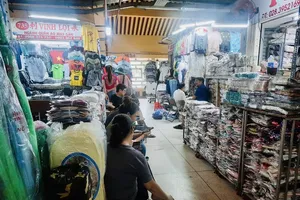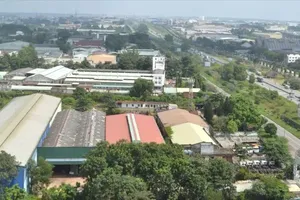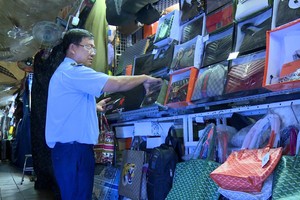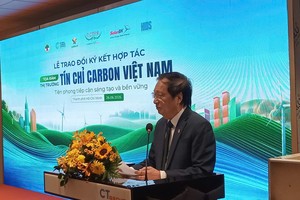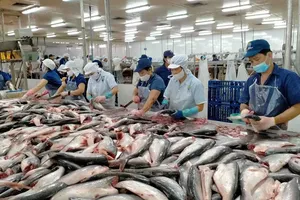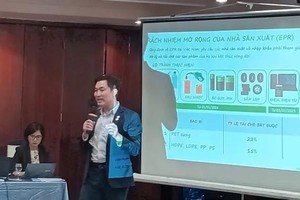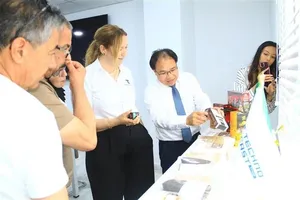Yesterday afternoon in Son La Province, the Vietnam Horticultural Association, in collaboration with the Ministry of Agriculture and Environment, held a forum titled 'Connecting Production and Trade of Agricultural and Forestry Products in the Northwest Provinces'.
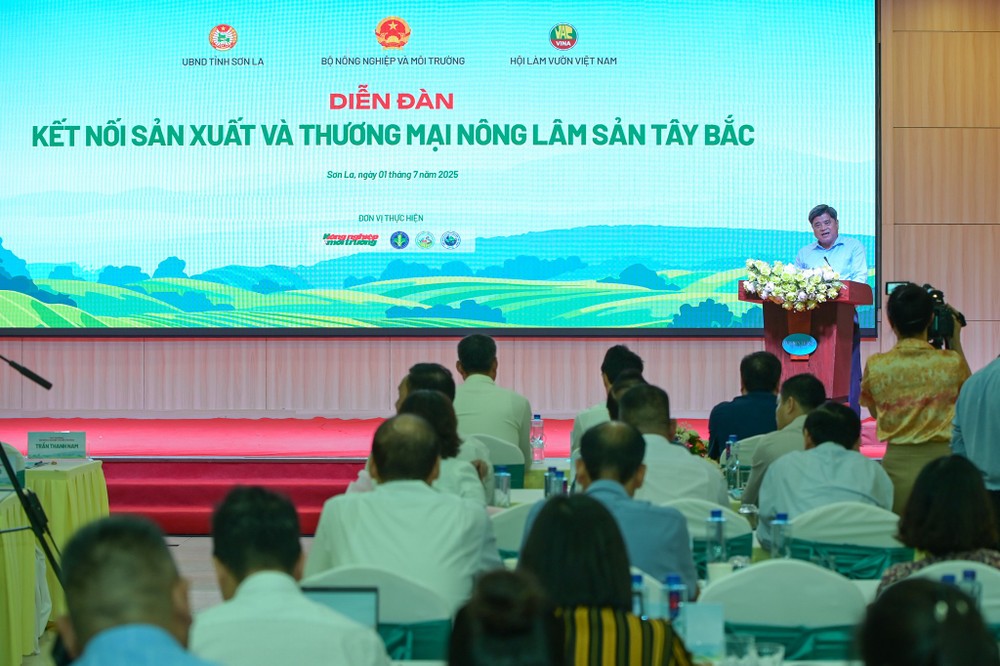
Chairman Le Quoc Doanh of the Vietnam Horticultural Association said that the Northwest region of the country has great potential for developing agricultural and forestry products thanks to its diverse climate, soil and ecosystem conditions.
Over the past decade, the coffee cultivation area in the region has grown by 54 percent with output surging by 265 percent. However, the proportion of products with quality certification remains low, and the lack of synchronized chain linkage and post-harvest processing continues to hinder the competitiveness of the region's agricultural products.
In 2024, the total export value of agricultural products from the region approximated US$245 million. Key export products included coffee, valued at over $90 million, tapioca starch at more than $36 million, longan and mango at around $30 million, tea at $22 million, and cinnamon essential oil exceeding $22 million.
Vice Chairman of Son La Provincial People's Committee Nguyen Thanh Cong said that in nearly a decade, the locality has converted and newly planted nearly 62,000 hectares of fruit trees. Currently, the province is home to more than 120,000 hectares of fruit trees and perennial industrial trees with the outputs of 510,000 tons and 102,000 tons.
The province has established 216 export-oriented growing area codes and 201 safe supply chains, with over 5,500 hectares meeting VietGAP standards and nearly 30,000 tons of coffee certified for sustainability.
However, Son La Province still faces difficulties due to steep terrain, scattered production, high costs and low deep processing rates. Deputy Director of the Department of Agriculture and Environment of Son La Province Cam Thi Phong said that the province will focus on increasing the rate of VietGAP, promoting the application of water-saving irrigation technology and post-harvest processing. It aims to become the agricultural processing center of the midland and mountainous region of the North by 2030.

Deputy Director of the Department of Agriculture and Environment of Dien Bien Province Lo Hong Phong said that the province has over 4,000 hectares of fruit trees, primarily consisting of mango, pineapple, jackfruit, grapefruit, and pear. Additionally, Dien Bien cultivates nearly 4,800 hectares of coffee, 5,000 hectares of rubber, and 12,300 hectares of macadamia.
However, the region faces significant challenges, including a lack of processing and preservation facilities and weak production linkages. Meanwhile, Lai Chau province is establishing itself as a key hub for medicinal plant cultivation in the region.
Director of the Department of Agriculture and Environment Bui Huy Phuong said that the whole Lai Chau Province has more than 23,000 hectares of medicinal plants, with an annual output of about 3,000 tons. Lai Chau ginseng (also known as black ginseng or red ginseng) is a precious medicinal plant with high economic value.
Director Phuong suggested that scientists and businesses invest in developing this product to enhance the brand of Vietnamese medicinal plants.
In his concluding statements at the forum, Deputy Minister of Agriculture and Environment Tran Thanh Nam highlighted that establishing a standard raw material zone is a fundamental element that influences the capacity to engage in the global supply chain. He recommended that leaders of the Northwestern provinces focus on planning following the merger of administrative units.
Leaders of these provinces should assess and re-plan each commune to pinpoint essential growing regions and suitable production scales, thus reorienting and integrating them into the comprehensive planning for local agricultural development.
Alongside reorganizing production and implementing science and technology, the leaders of the Ministry of Agriculture and Environment advocated for enhancing deep processing and post-harvest preservation capabilities. Specifically, management agencies and cooperatives should continue to collaborate with large enterprises to establish a system for preliminary processing, packaging, and cold storage at cooperatives, cooperative groups, and collection agents, ensuring that the quality of agricultural products meets market demands.
